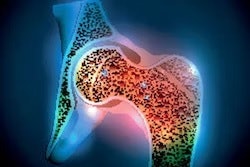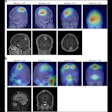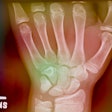A large observational analysis has failed to detect any clinically meaningful benefit of statin use on bone mineral density (BMD), a team of Canadian and U.S. researchers reported.
The finding is from a clinical registry of 22,393 individuals who underwent dual-energy x-ray absorptiometry (DEXA) scans and clarifies whether or not statins may lower risk for osteoporosis, noted lead author William Leslie, of the University of Manitoba in Winnipeg, Canada, and colleagues.
“In this large clinical registry of individuals undergoing initial and repeat assessment with [DEXA], there was inconsistent and largely negative evidence for statin use affecting initial total hip BMD or rate of BMD loss during follow-up,” the group wrote. The study was published May 29 in the Journal of Bone and Mineral Research.
Statins are among the most widely prescribed medications in older individuals. In animal studies, statins have been seen to enhance bone formation and protect osteoblasts against apoptosis. Yet data in humans suggesting that statins may be associated with greater BMD and lower risk for osteoporosis have been inconsistent, the group wrote.
The researchers identified 22,393 individuals ages 40 and older who underwent initial (visit 1) and repeat (visit 2) DEXA scans within one to 10 years between February 1999 and March 2018.
Linked medication records showed that 4,119 (18.3%) patients in the study population were statin users at visit 1 and 6,667 (29.8%) were statin users at visit 2. The average time between visit 1 and visit 2 for the cohort was 4.5 years.
According to the analysis, the average annualized total hip BMD loss among the whole group between both visits was 0.31% per year. In an unadjusted analysis, total hip BMD loss between visits 1 and 2 was significantly greater for minimal statin users compared with statin nonusers (BMD loss of 0.44% per year vs. a BMD loss of 0.3% per year). However, low to high statin exposure did not show greater BMD loss than nonusers.
Even among those with the greatest exposure, an average of 5.1 years of prior statin use with high adherence, the observed effects on covariate-adjusted initial total hip BMD or annualized change in total hip BMD did not show clinically significant differences, the researchers noted.
“In 22,393 individuals undergoing initial and repeat bone density measurements, we failed to detect a clinically meaningful effect of statin exposure on bone density, even when taken consistently over several years,” the group wrote.
The results suggest that prior human data relating statin use to BMD and osteoporosis are inconsistent, and these findings align with studies that failed to demonstrate a clinically meaningful BMD benefit from statin use.
“Our study is much larger than any previous study evaluating BMD change cross-sectionally and longitudinally,” the study authors wrote.
The full study is available here.




















